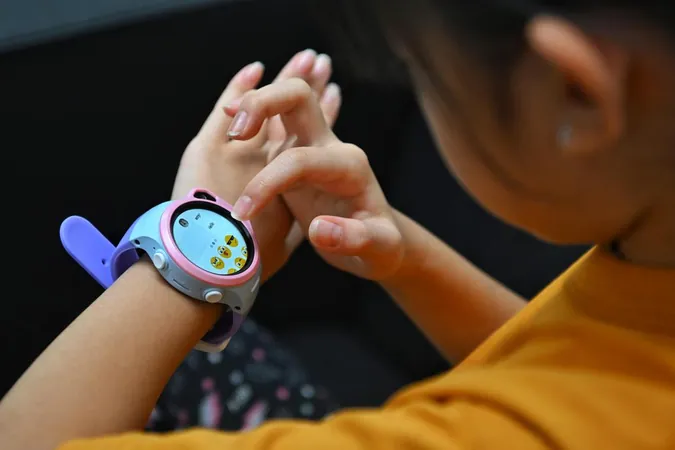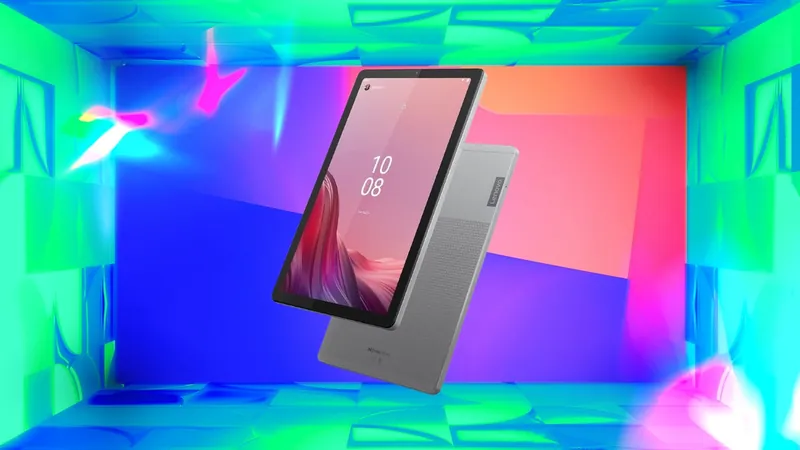
Parents Embrace Smartwatches for Kids Amid Global Screen-Time Concerns
2025-03-23
Author: Nur
Introduction
In a world where screen time for children is under intense scrutiny, more parents are steering away from smartphones and opting for children's smartwatches as a safer communication alternative.
A Shift in Parenting Choices
Take Ms. Shirley Ng, for example. Her eldest daughter received a mobile phone at the age of nine, but her younger daughter, Alysandra, now the same age, is instead sporting a smartwatch. This device enables Ms. Ng to monitor Alysandra's location and communicate with her through a built-in SIM card, all while sidestepping the potential perils of a smartphone.
"Of course, Alysandra wonders why her sister got a phone, but we want to keep her screen time in check. With a smartwatch, there are limited activities that could lead to addiction," explained Ms. Ng, an administrative executive.
Growing Concerns About Screen Time
Parents are increasingly worried about the negative effects of smartphone use on their children, inspiring a trend toward smartwatches as a secure means of communication without the overwhelming distractions of mobile devices.
Market Trends and Statistics
Children’s smartwatches are tailored for younger users, allowing parents to oversee app downloads, limit distractions, and control who can communicate with their child. The popularity of this gadget has skyrocketed: according to the International Data Corporation (IDC), the kids' smartwatch segment saw a growth spurt even amid an overall decline in global smartwatch shipments, which dropped by 5% this year.
Interestingly, it was reported that more than 20 million kids' smartwatches were shipped globally in 2024, showcasing an up to 9% increase from the previous year. In Singapore, forecasts indicate that the market for these devices increased substantially, with sales nearly doubling as parents sought methods to safeguard their children’s wellbeing amidst rising concerns over screen exposure.
Features for Safety and Control
With the growing emphasis on limiting children's screen use, especially following guidelines from Singapore’s Health Ministry, parents are adopting smartwatches that can track locations via GPS and feature restricted communication options. Notable brands like Xiaomi and Garmin lead the charge, producing gadgets that prioritize safety. Popular models can range from $80 to $270, a reasonable price considering the peace of mind they afford parents.
Parental Perspective
Smartwatches come equipped with features designed to ease parental anxiety; they primarily allow communication with approved contacts and can even set up parental controls to restrict app installation or message functionality during school hours. Additionally, local brands like myFirst are gaining traction, with their sales doubling year over year, notably benefiting from expansion into international markets like the US.
Parents like Ms. Goh, who purchased a smartwatch for her seven-year-old daughter, are intent on delaying the introduction of smartphones even longer. "I remember managing my older children’s screen time and restrictions. Ming Xuan has already begun asking for a phone, but I’m determined to postpone it as long as possible," she shared, reflecting the sentiment of many parents prioritizing control and supervision in a digital world.
Expert Insights
However, experts caution that while smartwatches can provide a secure way to communicate, they may also be a source of distraction if not managed properly. Mrs. Esther Foong-Tan, co-founder of SGFamilies, emphasized the need for parents to remain engaged in their children's tech usage, ensuring that the devices are used appropriately and don’t become a source of disruptive notifications.
Conclusion
As the conversation around screen time continues to evolve, smartwatches are proving to be a viable solution for technology-savvy parents aiming to keep their children connected while minimizing exposure to the vast, often overwhelming landscape of smartphone content.





 Brasil (PT)
Brasil (PT)
 Canada (EN)
Canada (EN)
 Chile (ES)
Chile (ES)
 Česko (CS)
Česko (CS)
 대한민국 (KO)
대한민국 (KO)
 España (ES)
España (ES)
 France (FR)
France (FR)
 Hong Kong (EN)
Hong Kong (EN)
 Italia (IT)
Italia (IT)
 日本 (JA)
日本 (JA)
 Magyarország (HU)
Magyarország (HU)
 Norge (NO)
Norge (NO)
 Polska (PL)
Polska (PL)
 Schweiz (DE)
Schweiz (DE)
 Singapore (EN)
Singapore (EN)
 Sverige (SV)
Sverige (SV)
 Suomi (FI)
Suomi (FI)
 Türkiye (TR)
Türkiye (TR)
 الإمارات العربية المتحدة (AR)
الإمارات العربية المتحدة (AR)